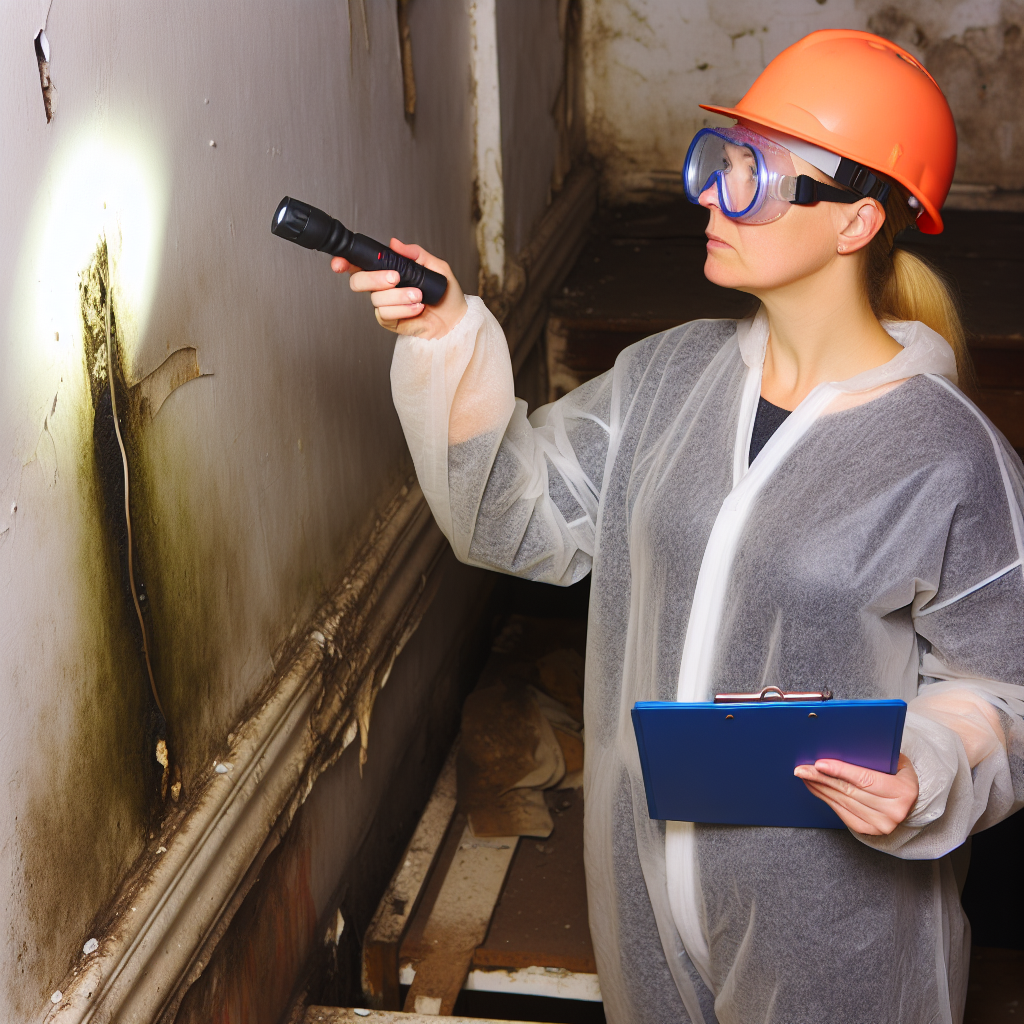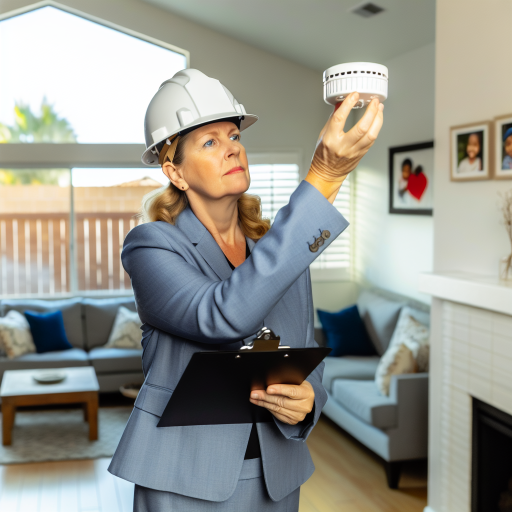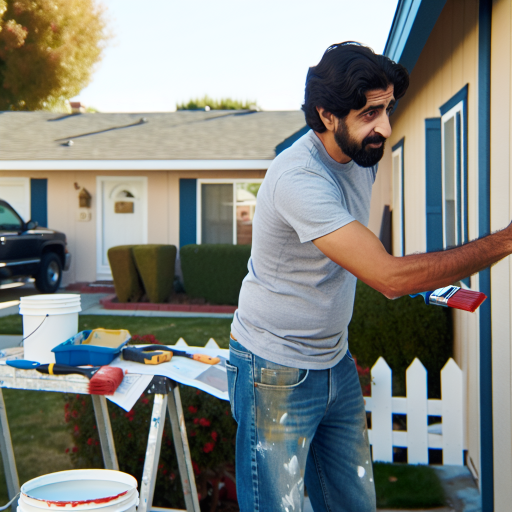Understanding the Importance of Home Inspections for Mold and Water Damage
Preventing Health Risks
Home inspections significantly help in preventing health risks associated with mold exposure.
Mold can cause various respiratory issues, including allergies and asthma.
Regular inspections can detect mold before it spreads throughout the home.
Protecting Home Value
A thorough inspection helps protect the home’s value by identifying potential water damage early.
Water damage can lead to costly repairs and decrease property value.
Addressing these issues promptly maintains the home’s marketability.
Ensuring Safety
Ensuring the safety of occupants is a primary concern during home inspections.
Mold infestations can weaken structural integrity if left unaddressed.
Inspecting for water damage also reduces the risk of falls or accidents.
Informing Future Buyers
A comprehensive inspection report builds trust with potential buyers.
It showcases the home as a safe and well-maintained investment.
Transparency about mold or water issues can prevent future disputes.
Gaining Peace of Mind
Finally, regular inspections provide peace of mind to homeowners.
Knowing the home is safe from mold and water damage reduces stress.
This assurance promotes a healthy living environment for families.
Transform Your Real Estate Decisions
Unlock personalized real estate insights crafted just for you. Get actionable advice designed to amplify your success.
Get StartedKey Signs of Water Damage to Look For During a Home Inspection
Visual Indicators
Pay attention to stains on walls and ceilings.
These stains often indicate water leakage above.
Dark patches can signal mold growth.
Moreover, peeling paint or wallpaper raises concern.
Look for buckling or warping in the flooring.
This can hint at moisture trapped beneath.
Musty Odors
Check for damp or musty smells in various areas.
Such odors can suggest hidden mold or mildew.
Ensure to inspect basements and crawl spaces carefully.
Structural Issues
Examine the foundation for cracks or settling.
Water intrusion can lead to significant structural damage.
Inspect windows and doors for misalignment.
This may indicate shifting or swelling due to moisture.
Exterior Signs
Look for pooling water around the home’s foundation.
Showcase Your Real Estate Business
Publish your company profile on our blog for just $200. Gain instant exposure and connect with a dedicated audience of real estate professionals and enthusiasts.
Publish Your ProfileThis can promote water seepage into the basement.
Gutters should be clear and functioning properly.
Overflowing gutters can direct water toward the home.
Plumbing Check
Investigate visible pipes for leaks.
Also, check under sinks for water accumulation.
Be aware of water pressure issues in fixtures.
Seasonal Considerations
Inspect insulation for signs of moisture in winter months.
In summer, air conditioning units can contribute to mildew.
Regular season checks can help prevent extensive damage.
Common Locations in the Home Prone to Mold Growth
Bathrooms
Bathrooms frequently experience high humidity and moisture.
Check around sinks, tubs, and toilets for mold signs.
Inspect the grout and caulking for discoloration or wear.
Basements
Basements are often damp due to poor ventilation.
Look for signs of water leaks or condensation on walls.
Inspect storage boxes and items for mold growth.
Kitchens
Kitchens can develop mold from cooking and spills.
Pay attention to areas under the sink and behind appliances.
Check food storage areas for expired food and moisture.
Attics
Attics can trap heat and humidity from below.
Examine insulation for mold spots or dampness.
Inspect vents and fans for proper airflow and debris.
Walls and Ceilings
Walls and ceilings may harbor mold behind paint and wallpaper.
Look for any peeling or bubbling paint as a warning sign.
Check for water stains which indicate possible leaks.
Windows and Doors
Windows can accumulate condensation, leading to mold growth.
Inspect window sills and frames for moisture damage.
Be mindful of door frames, especially in humid areas.
HVAC Systems
HVAC systems can circulate mold spores throughout the home.
Regularly check and change air filters to maintain airflow.
Inspect ducts for moisture buildup and mold growth.
Showcase Your Real Estate Business
Publish your company profile on our blog for just $200. Gain instant exposure and connect with a dedicated audience of real estate professionals and enthusiasts.
Publish Your ProfileDiscover More: Understanding Mortgage Options For First-Time Homebuyers In The USA
Detailed Checklist for Inspecting the Basement and Crawl Spaces
Initial Observations
Begin your inspection by looking for water stains on the walls or floors.
Check for musty odors that often indicate mold presence.
Examine the overall cleanliness. Debris can hide important issues.
Walls and Floors
Inspect walls for peeling paint or wallpaper. This can signal moisture issues.
Feel for dampness on concrete surfaces with your hands.
Look for cracks in the floor or walls. These can lead to water intrusion.
Pay attention to any visible mold growth on surfaces.
Foundation Inspection
Examine the foundation for signs of shifting or settling.
Check outside for any water pooling near the foundation.
Investigate the drainage system around the home.
Ensure that downspouts direct water away from the foundation.
Ventilation Assessment
Ensure that crawl spaces have adequate ventilation.
Look for vents that may be blocked by debris.
Examine air flow to prevent moisture buildup.
Consider installing a dehumidifier if moisture levels are high.
Pipes and Plumbing
Inspect pipes for leaks. Even small leaks can lead to mold growth.
Check for any signs of corrosion or staining around faucets and pipes.
Look at the water heater for signs of rust or leaks.
Ensure that all plumbing fixtures are properly sealed and functioning.
Insulation and Vapor Barriers
Check insulation in crawl spaces. It should be dry and intact.
Inspect vapor barriers for tears or displacement.
Ensure that vapor barriers cover all dirt floors adequately.
Address any gaps that might allow moisture to enter.
Final Steps
After your inspection, document any findings for repairs.
Consider hiring a professional for thorough analysis if needed.
Implement regular inspections as part of home maintenance.
Stay proactive in maintaining a dry environment to prevent future issues.
Uncover the Details: Importance Of Roof Evaluation Within An Effective Home Inspection Checklist
Tips for Examining the Plumbing System and Potential Leaks
Assess Visible Plumbing
Begin by inspecting your visible plumbing, including pipes and fittings.
Showcase Your Real Estate Business
Publish your company profile on our blog for just $200. Gain instant exposure and connect with a dedicated audience of real estate professionals and enthusiasts.
Publish Your ProfileLook for corrosion or rust on metal pipes and fixtures.
Additionally, check for any signs of water stains on walls and ceilings.
These stains may indicate leaks behind walls or ceilings.
Check Water Pressure
Monitor the water pressure in your home.
Low water pressure can be a sign of leaks or blockages.
Use a water pressure gauge for accurate measurements.
A pressure reading below 40 psi may require further investigation.
Inspect Under Sinks
Next, examine the area under sinks in your kitchen and bathrooms.
Look for pooling water or dampness around pipes.
Check seals and joints for any signs of wear or damage.
Also, ensure that the drain is not clogged, which can cause overflow.
Look for Water Heater Issues
Inspect your water heater for signs of leaks and rust.
Signs such as pooling water or corrosion indicate problems.
Check the connections for tightness and wear as well.
Keep an eye on the temperature and pressure relief valve too.
Evaluate Toilets
Toilets often develop silent leaks, wasting significant water.
Place a few drops of food coloring in the tank.
Wait for about 30 minutes to see if the color appears in the bowl.
If it does, a flapper valve replacement is necessary.
Inspect Outdoor Plumbing
Do not neglect the outdoor plumbing systems.
Check hoses, spigots, and irrigation systems for leaks.
Look for signs of water pooling around these areas.
Additionally, ensure gutters and downspouts are clear and functioning.
Schedule Professional Inspections
Finally, consider hiring a professional plumber for a thorough inspection.
They have the expertise and tools to identify hidden leaks.
Regular inspections can help prevent costly repairs in the future.
Stay proactive to maintain a healthy plumbing system.
Uncover the Details: What To Expect During The Closing Process As A First-Time Homebuyer
Evaluating the Roof and Gutters for Water Damage Risks
Visual Inspection of the Roof
Start by examining the roof for any visible damage.
Look for missing shingles, cracks, or sagging areas.
Showcase Your Real Estate Business
Publish your company profile on our blog for just $200. Gain instant exposure and connect with a dedicated audience of real estate professionals and enthusiasts.
Publish Your ProfileMoss or algae growth can indicate moisture retention.
Additionally, inspect the flashing around vents and chimneys.
Compromised flashing often leads to leaks.
Checking the Gutters
Inspect the gutters for blockages and debris.
Clear any leaves or twigs that can impede water flow.
Ensure gutters are securely attached to the roofline.
Check for signs of rust or corrosion on metal gutters.
These issues can lead to leaks and further damage.
Assessing Downspouts
Evaluate downspouts to confirm they direct water away from the foundation.
Look for any cracks or separations in the downspout joints.
These can prevent effective drainage and promote water pooling.
Consider the downspout extensions; they should effectively disperse water.
Signs of Water Intrusion
Look for stains on the ceilings and walls inside the house.
These stains often indicate past or current leaks.
Mold growth around windows and ceilings can signal moisture problems.
Examine the attic for any signs of water damage or leaks.
Professional Assessment
If you discover significant issues, consult a professional inspector.
Expert evaluations can identify underlying problems.
This proactive step can save you from costly repairs.
Explore Further: Protecting Your Investment Using A Mindful Home Inspection Checklist Approach

Guidance on Checking Windows and Doors for Moisture Issues
Inspect Window Frames
Start by examining the window frames for any signs of water damage.
Check for soft or rotted wood, which indicates moisture problems.
Look for paint peeling or bubbling, signaling possible leaks.
Use a flashlight to inspect the corners and edges for dark spots.
Assess Window Seals
Check the integrity of the window seals around each pane.
Cracks or gaps in these seals can lead to moisture intrusion.
Examine the caulking; it should be smooth and intact.
Replace any deteriorated or missing caulk immediately.
Examine Window Wells
Inspect window wells for debris that may hold water.
Ensure that they are draining properly to prevent accumulation.
Showcase Your Real Estate Business
Publish your company profile on our blog for just $200. Gain instant exposure and connect with a dedicated audience of real estate professionals and enthusiasts.
Publish Your ProfileLook for algae or mold growth, as these are signs of moisture retention.
Check Door Frames
Examine the area around door frames for water damage signs.
Look for discoloration or swelling in the wood.
Feel for leaks around the bottom thresholds of doors.
Evaluate Door Seals and Weatherstripping
Ensure that door seals are functioning properly.
Check the weatherstripping for any gaps or deterioration.
Replace any worn or damaged weatherstripping without delay.
Monitor Humidity Levels
Keep an eye on the humidity levels inside your home.
Use a hygrometer to measure indoor humidity regularly.
A level above 60% can encourage mold growth.
Take Action on Findings
If you spot moisture issues, take immediate action.
Consider consulting a professional for remediation if needed.
Regular inspections can prevent costly repairs down the line.
Understanding the Role of Humidity and Ventilation in Mold Prevention
The Importance of Humidity Control
Humidity plays a critical role in mold growth.
Maintaining indoor humidity levels below 60% is essential.
Excess moisture encourages mold spores to thrive.
Use a hygrometer to monitor humidity levels regularly.
In addition, consider using dehumidifiers in damp areas.
Ensuring Proper Ventilation
Ventilation is vital for preventing stagnant air.
Proper airflow helps reduce moisture buildup indoors.
Opening windows can improve air circulation when weather permits.
Use exhaust fans in kitchens and bathrooms to eliminate excess moisture.
Additionally, ensure that air ducts are clean and unblocked.
Strategic Use of Natural Light
Natural light can help reduce moisture levels.
Open curtains and blinds during daylight hours.
Consider using glass doors or skylights for additional sunlight.
Sunlight can inhibit mold growth on surfaces.
Moreover, it creates a brighter, more inviting atmosphere.
Regularly Inspecting Problematic Areas
Regular inspections can help identify humidity issues.
Focus on areas prone to dampness, like basements and attics.
Showcase Your Real Estate Business
Publish your company profile on our blog for just $200. Gain instant exposure and connect with a dedicated audience of real estate professionals and enthusiasts.
Publish Your ProfileCheck for leaks and water stains in walls and ceilings.
Repair any leaks promptly to avoid moisture accumulation.
Additionally, monitor areas around windows and plumbing fixtures.
Steps to Take If Mold is Detected During the Inspection
Assess the Situation
Start by determining the extent of the mold growth.
Look for visible signs such as discoloration or mold patches.
Check areas that are often damp, like basements and bathrooms.
Evaluate any possible sources of water intrusion.
Document your findings with photos and detailed notes.
Limit Exposure
Turn off any air conditioning or heating systems.
This helps prevent further spread of mold spores.
Seal off affected areas to limit access.
Use plastic sheeting to block airflow between rooms.
Contact Professionals
Consult a licensed mold remediation specialist.
Choose someone with experience in mold removal.
Ask for references and check their qualifications.
Ensure they follow appropriate safety guidelines.
Clean the Area
If the mold is minimal, you might consider cleaning it yourself.
Use protective gear, including gloves and masks.
Utilize a mixture of water and detergent for cleaning.
Dispose of any contaminated materials safely.
Prevent Future Growth
Identify and eliminate moisture sources in the home.
Improve ventilation in areas prone to dampness.
Consider using a dehumidifier in humid climates.
Regularly inspect the property for potential mold growth.
Additional Resources
Mold: Is It Hiding in the Home You’re Buying?
What do I do if I found issues with a home after closing on the deal …




